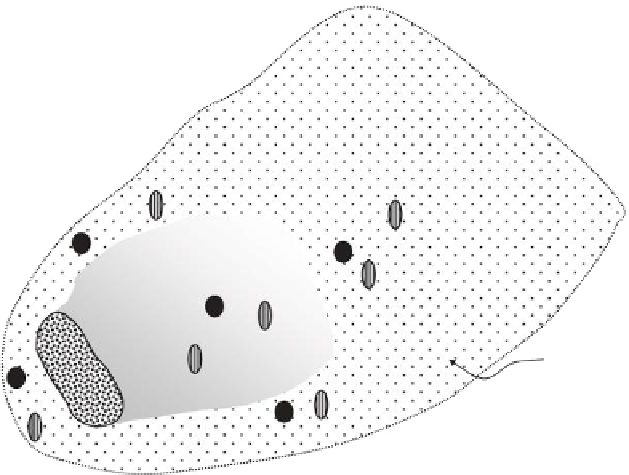Environmental Engineering Reference
In-Depth Information
Multilevel soil sampling
Treatment
zone
Nests of
monitoring and
sampling wells
Contamination
source
Contaminant plume
Plan view
FIGURE 10.15
Plan view of distribution of monitoring wells and soil sampling boreholes for veriication monitoring of treat-
ment zone effectiveness and long-term conformance monitoring.
a simple SPR (source-pathway-receptor) problem that uses a treatment zone to mitigate
the impact of the contaminant plume generated by the contamination source shown at
the bottom left of the diagram. To determine if the treatment zone is effective in mitigat-
ing the impact of the generated contaminant, the monitoring scheme shown in Figure
10.15 is recommended. By this means, determination of reduction in concentration and
toxicity of the contaminants can be obtained. This procedure also allows one to establish
evidence of success of the treatment zone. It can be argued that one should remove the
contaminant source as part of the mitigation procedure. Assuming that the source is
an industrial facility, the obvious course of action is to (a) implement operational pro-
cedures in the facility that will reduce output of contaminating items and (b) establish
or improve treatment of discharges to capture all the noxious substances discharged
into the land environment. The combination of the treatment zone with removal of con-
taminant source will ensure short-term mitigation and longer-term elimination of the
threats posed by the contamination plume—a positive step toward geoenvironmental
sustainability.
10.7.2.1 Permeable Reactive Barriers and NA
Permeable reactive barriers (PRBs) are engineered material-barriers constructed and
placed in the ground to intercept contaminant plumes. The material in these barriers


























Search WWH ::

Custom Search